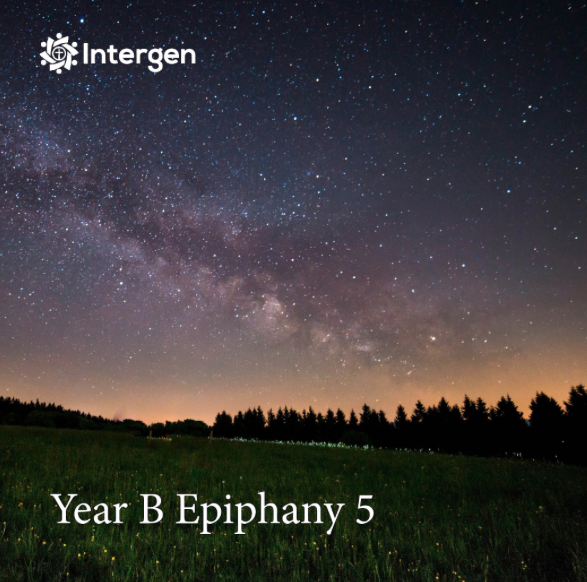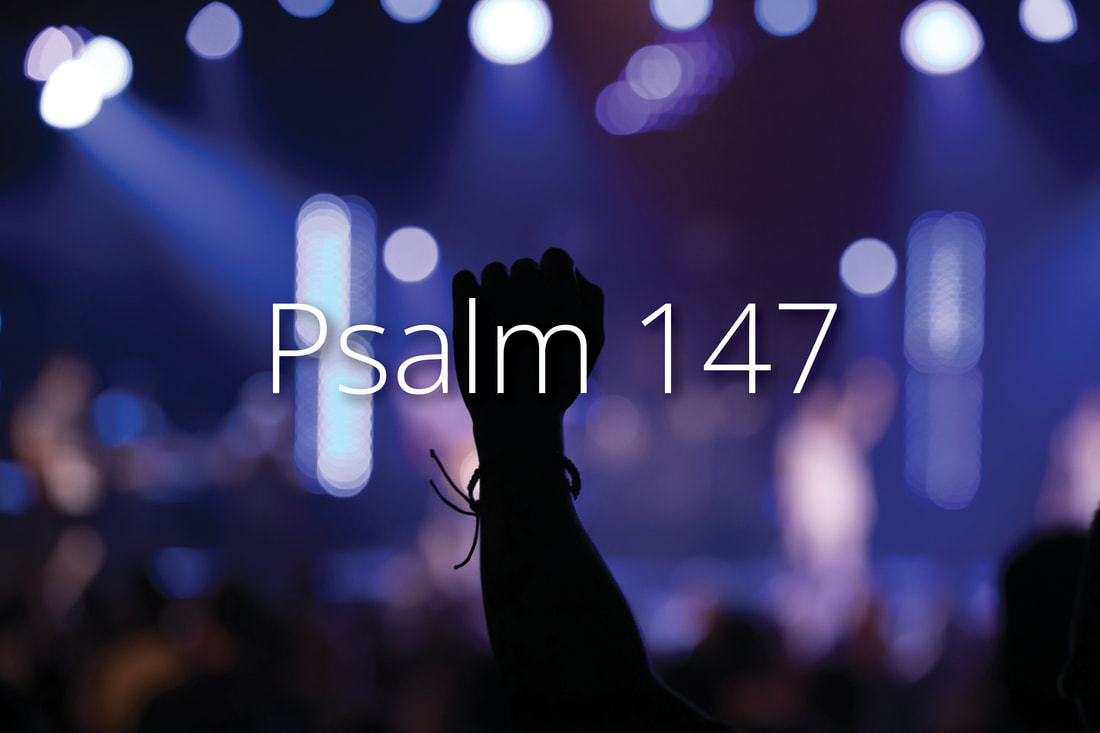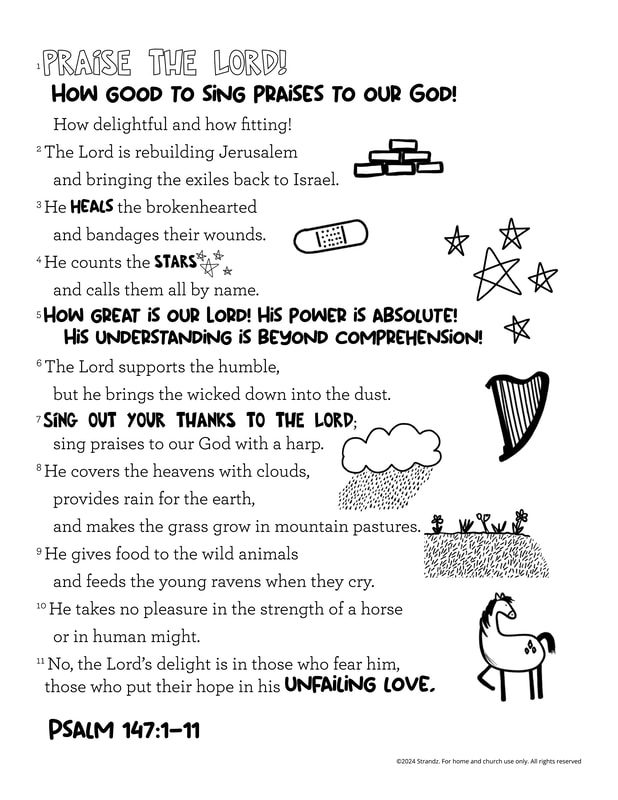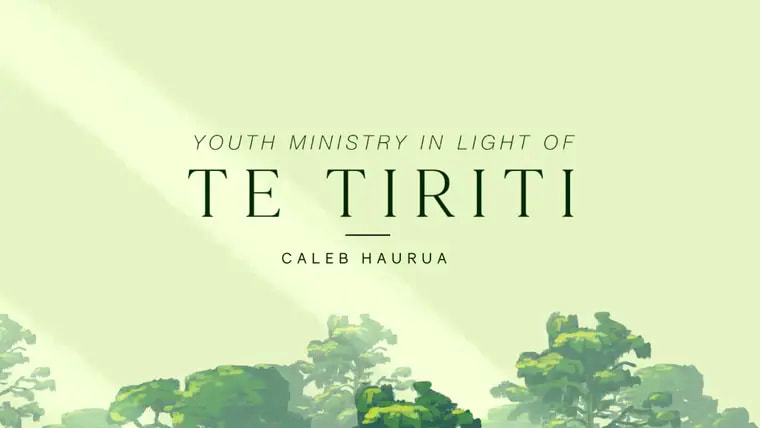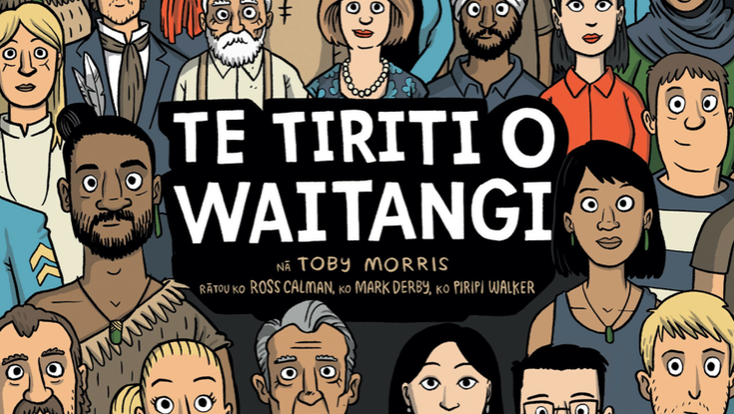4 February 2024
Bible readings for today
Liturgical Colour: GREEN Today is AAW Sunday (first Sunday in February) |
CollectAlmighty God,
you have called us to serve you, yet without your grace we are not able to please you; mercifully grant that your Holy Spirit may in all things direct and rule our hearts; through Jesus Christ our Lord. Amen. E te Atua kaha rawa, nāu mātou i karanga ki te mahi māu, engari ki te kāhore tōu aroha e kore rawa mātou e tau ki te whakapai i a koe; tukua mai tōu Wairua Tapu hei whakatika i te whakahaere a ō mātou manawa; Ko Īhu Karaiti tō mātou Ariki. Āmine. |
Back to School
With some school students and teaching staff preparing to head back to school this week and the next, consider how you can pray for your tamariki or your local school this Sunday. You can find a *new* Back to School Blessing on our Strandz website.
Jesus heals many (Mark 1:29-39)
Church of Scotland resourcesIn today's gospel reading, the write users the Greek word “egeiro”, used for “get up”, and this is the same usage as for the resurrection of Jesus in Mark chapter 16. There’s a clear proleptic intention by the author – this action is a sign of what is to come in the Gospel.
The Church of Scotland provides some great context and background for these Lectionary texts today - see here Intergenerational WorshipSome resources from Intergen Australia, written and compiled by Melissa Neumann. This week they consider how the Bible passages spur us on to delight in God, and how God delights in us. View here
Gospel ConversationsGospel Conversations is back! Refreshed after a month or so off, our Conversationalists are starting again for another year. We launch with the energetic combination of Bishop Kelvin Wright, Revd Wendy Scott and Emma Wilson, who join Archdeacon Mike to talk about the rush of stories that strike us just as the Gospel of Mark begins. Thanks Dunedin Diocese!
|
GamesThe games are taken from the website Jesus Without Language, at the following link and play on the three ideas of links to Jesus, healing and touch.
Holding On Give the youngsters tape, paper and scissors to make paper-chains. Get the youngsters to construct a paper-chain that links everybody’s wrists together. Talk about how we all came to church because of somebody we are linked to – a family member, a friend, etc. then stand up and try to move without breaking the chain… this probably won’t last long. Say that even though we came to church because of somebody else we are each loved individually by God. Plastering Balloons This is a messy game that can be played with water in the summer. You need at least one balloon per child, tape or small sticky plasters and a sharp pin. Before you give the balloons out make 3 or 4 pin holes in them. Give the children a balloon and say it’s broken, but they can fix it. The game starts when you shout start and ends when either all the balloons are fully inflated, or the first balloon is fully inflated. Plaster Hunt Like hide the thimble meets a treasure hunt but with plasters. Just be careful that they can be removed from where you place them. As they are found they can be stuck to the person who finds them. Additional CollectHealing God,
in the touch of Jesus the sick were healed, the chains unbound. Freedom is before us. Set us on a new path of wholeness, deliver us from all that binds us, turn us to embrace that life giving love offered through Jesus Christ, who is alive and lives with you, in the unity of the Holy Spirit, one God, now and forever. Amen |
Psalm 147
Psalm 147:1-11 printable |
Francesca LaRosa songJohn Piper sermon |
Waitangi Day
Te Tiriti o Waitangi / Treaty of Waitangi is remembered in New Zealand on the 6th February, the date on which the treaty was first signed in the Bay of Islands between the Crown and Māori.
Te Tiriti o Waitangi /Treaty of WaitangiToday we are thinking about the Treaty of Waitangi – ask if anyone knows what that means.
Te Tiriti o Waitangi – The Treaty of Waitangi is not a single large sheet of paper but a group of nine documents: seven on paper and two on parchment. Together they represent an agreement drawn up between representatives of the British Crown on the one hand and representatives of Māori iwi and hapū on the other. Named after the place in the Bay of Islands where it was first signed on 6 February 1840, the Treaty was also signed at locations around the country over a seven-month period. We are looking at the 3 principles of the treaty (simplified here by www.montessorikiwi.com/waitangi). They are:
Discipleship PathwayIf you're interested in finding out more about Te Tiriti o Waitangi / Treaty of Waitangi, and would like to dig into what this means for us today, then you might like this Discipleship Pathway class, lead by Caleb Haurua.
Caleb unpacks our rich and complicated history gently, encouraging a deeper, undiluted understanding of the Treaty of Waitangi without inferring guilt. He weaves in Biblical truths and suggests a Christian way of thinking about the Church's relationship with Māori culture. This class can even be interesting and helpful for those outside of youth ministry, who are just seeking to understand their place in the Treaty covenant today. You can sign up and watch these videos for free on the Discipleship Pathway website |
Te Tiriti o Waitangi BookTe Tiriti O Waitangi / The Treaty fo Waitangi - By Ross Calman, Mark Derby, Piripi Walker, Toby Morris. This is a reorua (bilingual) graphic novel that takes a fresh and innovative look at our founding treaty. Te Tiriti o Waitangi - written by Ross Calman and Mark Derby, and illustrated by Toby Morris - is now in all New Zealand schools with Year 7 and 8 pupils.
It reforms the current syllabus with simpler language and illustrations aimed at helping 10- and 12-year-olds with a Year 6 reading level. Other ResourcesScripture Union have a collection of ideas and resources to help your tamariki engage with Waitangi Day, and the Treaty of Waitangi.
|
Media
|
|
|
|
|
<< LAST WEEK Epiphany 4
|
NEXT WEEK Ordinary 6 >>
|



